-
 Bitcoin
Bitcoin $107,758.1435
-1.45% -
 Ethereum
Ethereum $2,490.6114
-3.32% -
 Tether USDt
Tether USDt $1.0004
0.00% -
 XRP
XRP $2.2042
-2.04% -
 BNB
BNB $651.4818
-1.12% -
 Solana
Solana $145.8782
-3.02% -
 USDC
USDC $0.9999
0.00% -
 TRON
TRON $0.2819
-1.39% -
 Dogecoin
Dogecoin $0.1621
-4.58% -
 Cardano
Cardano $0.5658
-4.18% -
 Hyperliquid
Hyperliquid $37.8181
-6.63% -
 Sui
Sui $2.8404
-4.91% -
 Bitcoin Cash
Bitcoin Cash $481.3703
-2.30% -
 Chainlink
Chainlink $13.0043
-4.79% -
 UNUS SED LEO
UNUS SED LEO $9.0464
0.26% -
 Avalanche
Avalanche $17.6115
-4.39% -
 Stellar
Stellar $0.2359
-2.11% -
 Toncoin
Toncoin $2.7507
-3.93% -
 Shiba Inu
Shiba Inu $0.0...01126
-4.41% -
 Litecoin
Litecoin $86.1256
-3.27% -
 Hedera
Hedera $0.1530
-3.13% -
 Monero
Monero $312.7785
-2.81% -
 Dai
Dai $1.0000
-0.01% -
 Ethena USDe
Ethena USDe $1.0001
-0.02% -
 Polkadot
Polkadot $3.3287
-5.55% -
 Bitget Token
Bitget Token $4.3840
-4.00% -
 Uniswap
Uniswap $6.8370
-10.63% -
 Pepe
Pepe $0.0...09548
-4.25% -
 Aave
Aave $260.2526
-6.11% -
 Pi
Pi $0.4658
-5.45%
What is the forced liquidation mechanism of Bitfinex contracts? How to avoid forced liquidation?
Bitfinex's forced liquidation protects traders from excessive losses by closing positions when margin falls below maintenance levels, but it can lead to slippage and socialized losses.
May 02, 2025 at 02:00 am
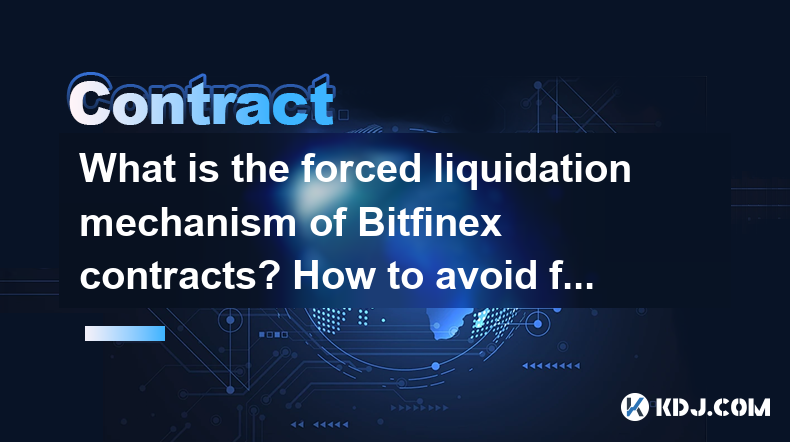
The forced liquidation mechanism of Bitfinex contracts is a crucial aspect of trading on this platform, designed to protect both the exchange and its users from excessive losses. Understanding this mechanism is essential for any trader looking to engage in futures trading on Bitfinex. In this article, we will delve into the details of how forced liquidation works and provide strategies to avoid it.
Understanding Forced Liquidation on Bitfinex
Forced liquidation occurs when a trader's position is automatically closed by the exchange due to insufficient margin to maintain the position. This happens when the market moves against the trader's position, causing their margin to fall below the maintenance margin level set by Bitfinex. The primary goal of forced liquidation is to prevent the trader's account from going into a negative balance, which could pose a risk to the exchange's stability.
The maintenance margin is a critical threshold that traders need to monitor closely. If the value of a trader's position drops to this level or below, Bitfinex will initiate the liquidation process. The exact maintenance margin percentage varies depending on the type of contract and the leverage used, but it typically ranges between 10% to 20% of the initial margin.
How Bitfinex Calculates Liquidation Price
To understand when forced liquidation might occur, traders need to be aware of how Bitfinex calculates the liquidation price. The liquidation price is the market price at which the maintenance margin requirement is no longer met, triggering the forced closure of the position. The formula for calculating the liquidation price for a long position is as follows:
[ \text{Liquidation Price (Long)} = \frac{\text{Entry Price} \times (1 - \text{Maintenance Margin}) - \text{Initial Margin}}{\text{Entry Price} \times (1 - \text{Maintenance Margin} - \text{Initial Margin})} ]
For a short position, the formula is:
[ \text{Liquidation Price (Short)} = \frac{\text{Entry Price} \times (1 + \text{Maintenance Margin}) + \text{Initial Margin}}{\text{Entry Price} \times (1 + \text{Maintenance Margin} + \text{Initial Margin})} ]
These formulas help traders determine the price levels at which their positions might be liquidated, allowing them to plan their trades more effectively.
The Liquidation Process on Bitfinex
When a position reaches the liquidation price, Bitfinex's system automatically begins the liquidation process. The exchange uses a liquidation engine to close the position at the best available market price. The goal is to minimize losses for both the trader and the exchange. However, in highly volatile markets, the liquidation price might not be achieved, leading to a slippage where the actual closing price is worse than the calculated liquidation price.
During the liquidation process, Bitfinex may also use a socialized loss mechanism if the liquidation price cannot be achieved. In this scenario, any remaining loss is distributed among other traders who have open positions in the same contract, ensuring that the exchange remains solvent.
Strategies to Avoid Forced Liquidation
Avoiding forced liquidation is a priority for any trader. Here are some strategies that can help:
Monitor Your Margin Levels: Regularly check your account's margin levels to ensure they remain above the maintenance margin. Use Bitfinex's trading interface to keep an eye on your position's health.
Use Stop-Loss Orders: Implement stop-loss orders to automatically close your position if the market moves against you. This can help prevent your position from reaching the liquidation price.
Reduce Leverage: High leverage can amplify both gains and losses. By reducing the leverage used, you can increase the buffer between your position's value and the liquidation price.
Diversify Your Portfolio: Instead of putting all your capital into a single position, diversify your investments across different assets. This can help mitigate the risk of a single position being liquidated.
Add More Margin: If you see your position approaching the liquidation price, you can add more funds to your margin account to increase the distance between your current position and the liquidation price.
Practical Steps to Implement These Strategies
To put these strategies into action, follow these practical steps:
Monitoring Margin Levels:
- Log into your Bitfinex account.
- Navigate to the 'Positions' tab.
- Check the 'Margin' and 'Maintenance Margin' columns to see how close your positions are to liquidation.
Setting Up Stop-Loss Orders:
- Go to the 'Trading' tab.
- Select the contract you are trading.
- Click on 'Orders' and choose 'Stop-Loss'.
- Enter the stop-loss price and the quantity you want to sell.
- Confirm the order.
Adjusting Leverage:
- From the 'Positions' tab, select the position you want to adjust.
- Click on 'Adjust Leverage'.
- Enter the new leverage level and confirm.
Diversifying Your Portfolio:
- Review your current positions and assess your risk exposure.
- Decide on new assets to invest in and allocate funds accordingly.
- Place new orders to open positions in these assets.
Adding More Margin:
- Go to the 'Wallet' tab.
- Deposit more funds into your margin account.
- Navigate to the 'Positions' tab and select the position you want to add margin to.
- Click on 'Add Margin' and enter the amount you wish to add.
Understanding the Risks of Forced Liquidation
While forced liquidation is a protective mechanism, it comes with inherent risks. Slippage during liquidation can result in losses greater than anticipated. Additionally, in extreme market conditions, the socialized loss mechanism can impact other traders' positions. Understanding these risks can help traders make more informed decisions and manage their exposure effectively.
Frequently Asked Questions
Q: Can I manually close my position before it reaches the liquidation price?
A: Yes, you can manually close your position at any time before it reaches the liquidation price. To do this, go to the 'Positions' tab, select the position you want to close, and click on 'Close Position'. Confirm the closure, and your position will be liquidated at the current market price.
Q: What happens if I don't have enough funds to cover the liquidation?
A: If your account does not have enough funds to cover the liquidation, Bitfinex may use the socialized loss mechanism. This means that any remaining loss will be distributed among other traders with open positions in the same contract. It's crucial to monitor your margin levels to avoid such scenarios.
Q: How can I check my current liquidation price on Bitfinex?
A: To check your current liquidation price, log into your Bitfinex account, go to the 'Positions' tab, and look for the 'Liquidation Price' column. This will show you the price at which your position would be liquidated.
Q: Is there a way to set alerts for approaching liquidation levels?
A: Yes, Bitfinex allows you to set alerts for various conditions, including approaching liquidation levels. To set an alert, go to the 'Alerts' tab, select 'Price Alert', and enter the price level at which you want to be notified. This can help you take action before your position is liquidated.
Disclaimer:info@kdj.com
The information provided is not trading advice. kdj.com does not assume any responsibility for any investments made based on the information provided in this article. Cryptocurrencies are highly volatile and it is highly recommended that you invest with caution after thorough research!
If you believe that the content used on this website infringes your copyright, please contact us immediately (info@kdj.com) and we will delete it promptly.
- Bitcoin's Pattern Break: Are HODLers the Key to the Next Surge?
- 2025-07-04 18:50:12
- Bitcoin Price, Trump's Bill, and the $150K Dream: A NYC Take
- 2025-07-04 19:50:12
- Ethereum, LILPEPE, and the July Bounce: Will Pepe Steal ETH's Thunder?
- 2025-07-04 19:10:12
- Binance Institutional Loans: Unlocking 4x Leverage and Zero Interest for Whales
- 2025-07-04 19:15:12
- Bitcoin Bull Run: Analysts Eye Peak in Late 2025?
- 2025-07-04 19:20:13
- Pepe Indicators, Bullish Forecast: Can the Meme Coin Rally?
- 2025-07-04 19:25:12
Related knowledge
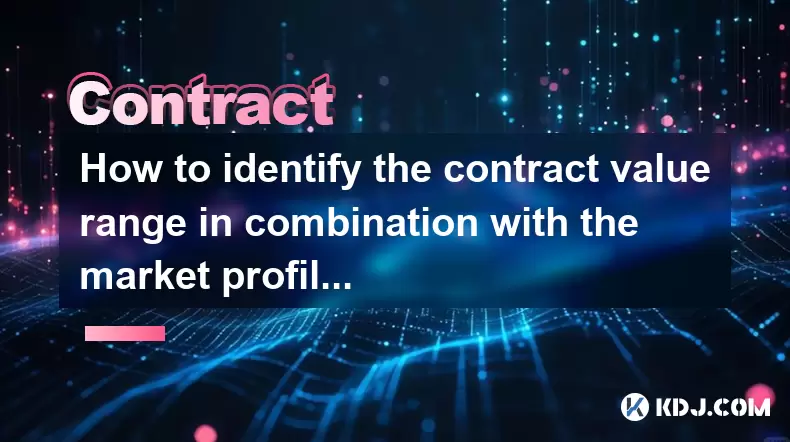
How to identify the contract value range in combination with the market profile?
Jul 02,2025 at 10:56pm
Understanding the Market ProfileTo effectively identify the contract value range in combination with the market profile, it's essential to first understand what each concept entails. The market profile is a framework that helps traders visualize how price and time interact across a given period, typically a trading day or session. It provides insights i...
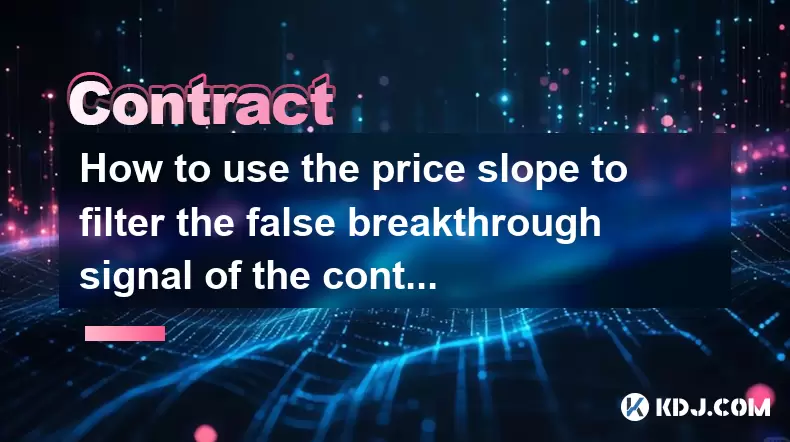
How to use the price slope to filter the false breakthrough signal of the contract?
Jun 20,2025 at 06:56pm
Understanding the Concept of Price Slope in Contract TradingIn contract trading, especially within cryptocurrency derivatives markets, price slope refers to the rate at which the price changes over a specific time period. It helps traders assess the strength and sustainability of a trend. A steep slope may indicate strong momentum, while a shallow slope...
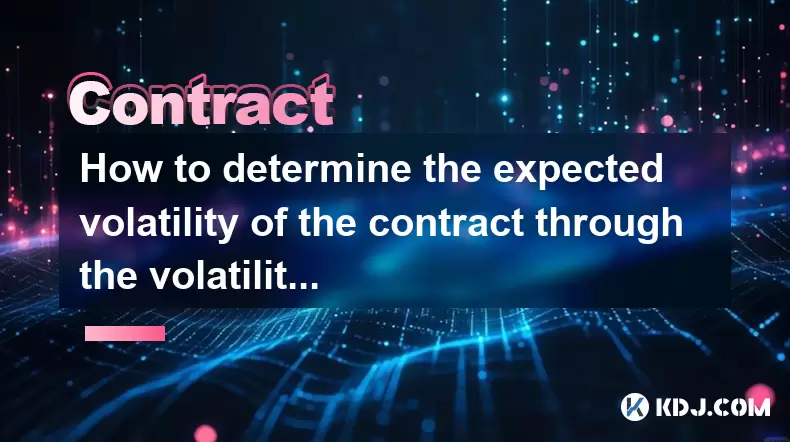
How to determine the expected volatility of the contract through the volatility cone?
Jun 19,2025 at 12:28pm
Understanding the Basics of Volatility in Cryptocurrency ContractsIn the realm of cryptocurrency trading, volatility is a key metric that traders use to assess potential risk and reward. When dealing with futures contracts, understanding how volatile an asset might become over time is crucial for position sizing, risk management, and strategy developmen...
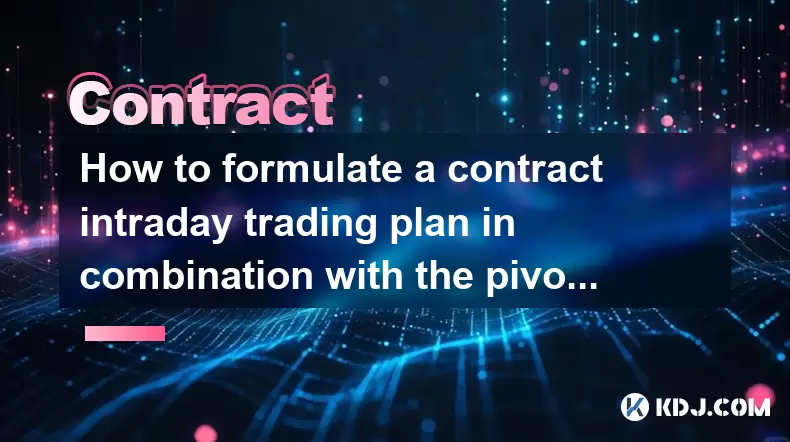
How to formulate a contract intraday trading plan in combination with the pivot point system?
Jun 21,2025 at 03:42pm
Understanding the Basics of Pivot Points in Cryptocurrency TradingPivot points are technical analysis tools used by traders to identify potential support and resistance levels. These levels are calculated using the previous day's high, low, and closing prices. In the context of cryptocurrency trading, where markets operate 24/7, pivot points help trader...
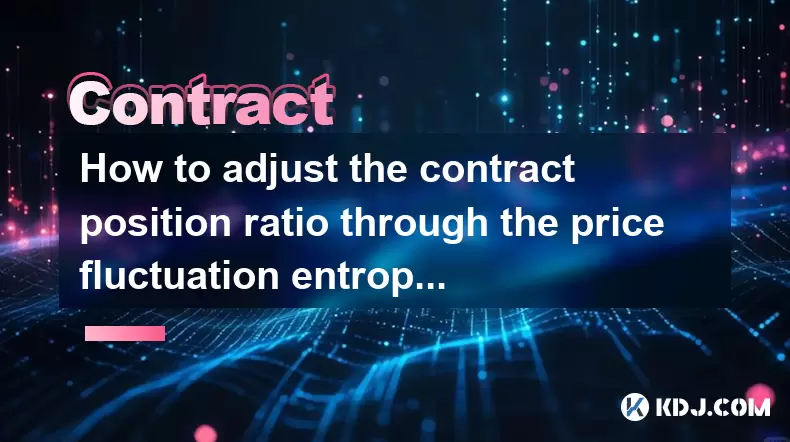
How to adjust the contract position ratio through the price fluctuation entropy?
Jun 22,2025 at 11:42am
Understanding Price Fluctuation Entropy in Cryptocurrency ContractsIn the world of cryptocurrency futures trading, price fluctuation entropy is a relatively new concept used to measure market volatility and uncertainty. It derives from information theory, where entropy refers to the degree of randomness or unpredictability in a system. In crypto contrac...
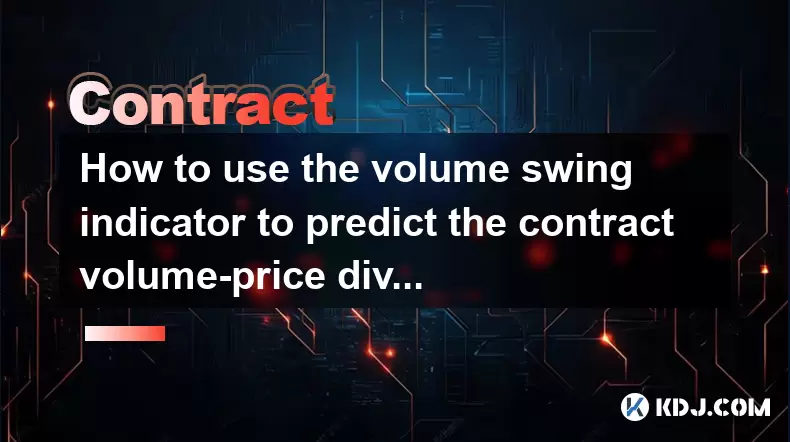
How to use the volume swing indicator to predict the contract volume-price divergence?
Jun 18,2025 at 11:42pm
Understanding the Volume Swing IndicatorThe volume swing indicator is a technical analysis tool used primarily in cryptocurrency trading to evaluate changes in volume over time. Unlike price-based indicators, this metric focuses solely on trading volume, which can provide early signals about potential market reversals or continuations. The key idea behi...

How to identify the contract value range in combination with the market profile?
Jul 02,2025 at 10:56pm
Understanding the Market ProfileTo effectively identify the contract value range in combination with the market profile, it's essential to first understand what each concept entails. The market profile is a framework that helps traders visualize how price and time interact across a given period, typically a trading day or session. It provides insights i...

How to use the price slope to filter the false breakthrough signal of the contract?
Jun 20,2025 at 06:56pm
Understanding the Concept of Price Slope in Contract TradingIn contract trading, especially within cryptocurrency derivatives markets, price slope refers to the rate at which the price changes over a specific time period. It helps traders assess the strength and sustainability of a trend. A steep slope may indicate strong momentum, while a shallow slope...

How to determine the expected volatility of the contract through the volatility cone?
Jun 19,2025 at 12:28pm
Understanding the Basics of Volatility in Cryptocurrency ContractsIn the realm of cryptocurrency trading, volatility is a key metric that traders use to assess potential risk and reward. When dealing with futures contracts, understanding how volatile an asset might become over time is crucial for position sizing, risk management, and strategy developmen...

How to formulate a contract intraday trading plan in combination with the pivot point system?
Jun 21,2025 at 03:42pm
Understanding the Basics of Pivot Points in Cryptocurrency TradingPivot points are technical analysis tools used by traders to identify potential support and resistance levels. These levels are calculated using the previous day's high, low, and closing prices. In the context of cryptocurrency trading, where markets operate 24/7, pivot points help trader...

How to adjust the contract position ratio through the price fluctuation entropy?
Jun 22,2025 at 11:42am
Understanding Price Fluctuation Entropy in Cryptocurrency ContractsIn the world of cryptocurrency futures trading, price fluctuation entropy is a relatively new concept used to measure market volatility and uncertainty. It derives from information theory, where entropy refers to the degree of randomness or unpredictability in a system. In crypto contrac...

How to use the volume swing indicator to predict the contract volume-price divergence?
Jun 18,2025 at 11:42pm
Understanding the Volume Swing IndicatorThe volume swing indicator is a technical analysis tool used primarily in cryptocurrency trading to evaluate changes in volume over time. Unlike price-based indicators, this metric focuses solely on trading volume, which can provide early signals about potential market reversals or continuations. The key idea behi...
See all articles

























































































